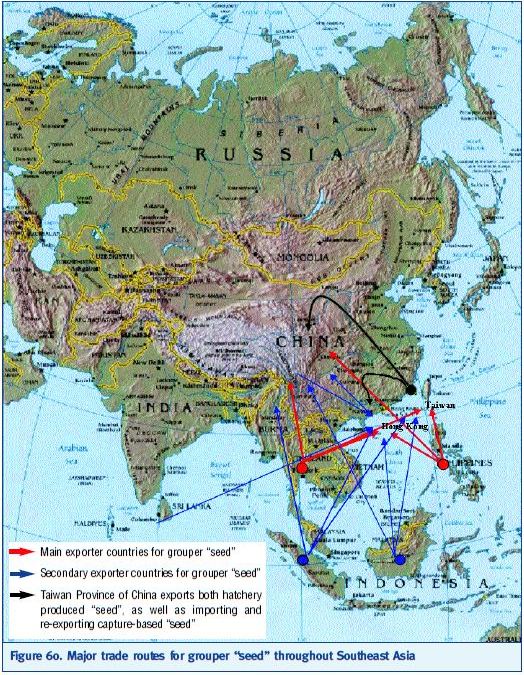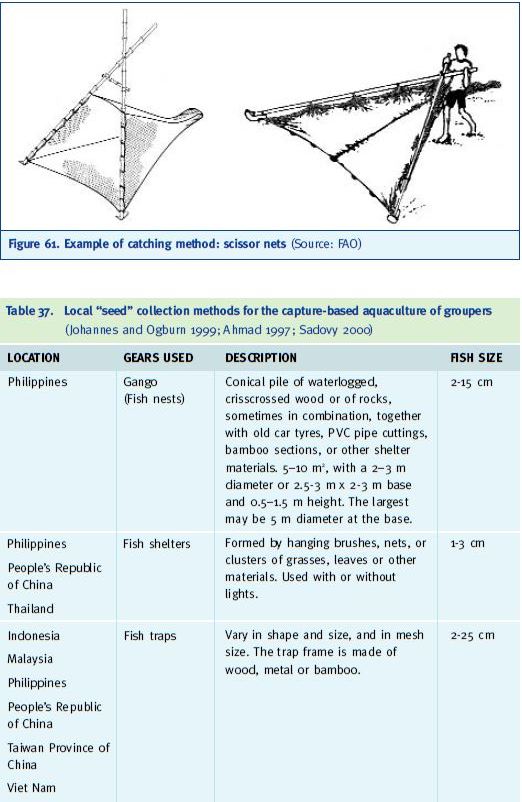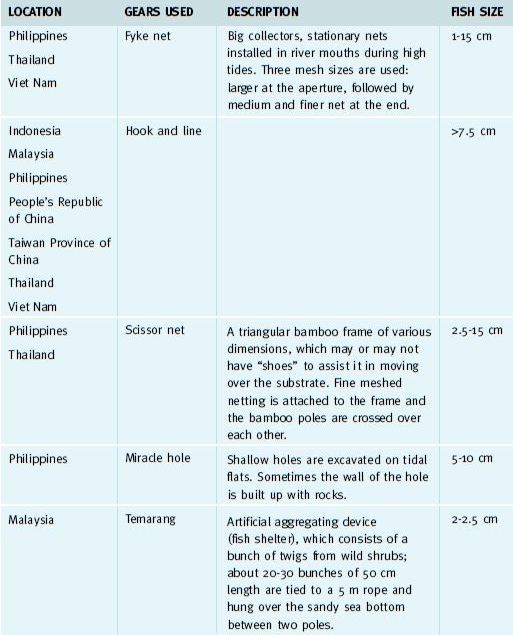Catching methods for “seed” material - grouper
Grouper “seeds” are collected using several different methods, depending on their location (Table 37). Catching methods are generally artisanal and the fishermen employ a variety of artificial habitats. Moreover, different fishing gears are used at different times of the year: the gear change follows the growth of the seed and their movement to deeper waters as the season progresses. Gears used to take grouper “seed” can be divided into 8 different categories: large fixed nets (e.g. fyke nets); traps and shelters; hook and line; scoop and push nets (Figure 61); artificial reefs; fish attractors; tidal pools; and chemicals.
The sizes of grouper “seed” caught and traded vary between 1-25 cm, i.e. from the moment of settlement to fish that are over one year old. However, most of the catch focuses on fish up to about 15 cm (Sadovy 2000).
For Epinephelus coioides and E. malabaricus, “seed” sizes are categorized as follows:
? un-scaled post-larvae, which are transparent or reddish, averaging 1 to 2.5 cm total length;
? scaled fry, which have begun to darken, ranging from around 2.5 to 7.5 cm (often measured from the eye to the caudal peduncle);
? fingerlings, from 7.5 to 12.5 cm (Johannes and Ogburn 1999).
Some grouper “seed” collection methods are more damaging than others. Clearly destructive are methods that result in high mortality, involve high levels of bycatch, cause damage to the fish habitat and/or result in monopolization of the local fishery by a few individuals. These include scissor nets and fyke nets, which are already banned in some areas. Lift nets are also destructive, particularly in terms of bycatch. Gango, miracle holes, fish shelters (with or without a boat), and lift nets (types of seed aggregation devices) do not possess the above drawbacks. Methods that target postlarvae seem less likely to deplete wild stocks because of the high natural mortality that probably characterizes this stage in the wild (Johannes and Ogburn 1999; Sadovy 2000).

Figure 60. Major trade routes for grouper “seed” throughout Southeast Asia
Figure 61. Example of catching method: scissor nets (Source: FAO)
Table 37. Local “seed” collection methods for the capture-based aquaculture of groupers (Johannes and Ogburn 1999; Ahmad 1997; Sadovy 2000)

